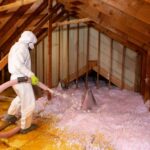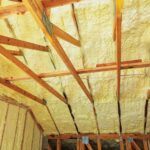In urban areas, ensuring effective roof drainage is crucial for maintaining the integrity of buildings and preventing water damage. With the complexities and density of urban environments, finding the right roof drainage solutions for urban areas becomes even more vital. In this article, we will explore various strategies and technologies that can help homeowners in urban settings manage their roof drainage effectively.

Understanding the Importance of Roof Drainage
Urban areas often face unique challenges due to their compact nature. When it rains, the large number of buildings and paved surfaces can lead to significant water runoff. Proper roof drainage systems are essential to channel this water away, preventing structural damage, leaks, and deterioration of building materials.
Key Components of Roof Drainage Systems
Gutters and Downspouts
Gutters and downspouts are the frontline defenders in any roof drainage system. They collect rainwater from the roof and direct it away from the foundation. It is crucial to keep them clean and well-maintained to ensure they function effectively.
Scuppers and Internal Drains
For flat roofs, scuppers and internal drains are popular choices. Scuppers are openings on the edge of the roof that allow water to flow off, while internal drains are installed within the roof structure to funnel water into the building’s drainage system.
Innovative Roof Drainage Solutions for Urban Areas
Green Roofs
Green roofs offer a sustainable solution by absorbing rainwater and reducing runoff. They consist of a layer of vegetation and soil, which helps in managing rainwater more effectively while providing additional insulation.
Blue Roofs
Blue roofs are designed to store rainwater temporarily. They have a controlled drainage mechanism that releases water slowly, reducing the burden on urban drainage systems during heavy rainfalls.
Permeable Pavements
Installing permeable pavements around buildings allows rainwater to seep through, reducing runoff and helping recharge groundwater levels. This solution is especially effective in urban areas where space is limited.
Choosing the Right Roof Drainage System
When selecting a roof drainage system, consider factors such as the roof type, building size, and local climate. Consulting with experts in urban drainage systems can provide valuable insights and help in making informed decisions.
Maintenance Tips for Roof Drainage Systems
Regular maintenance is key to ensuring long-lasting roof drainage solutions. Here are some tips:
- Clean gutters and downspouts regularly to prevent blockages.
- Inspect and repair any leaks or damages promptly.
- Ensure proper slope and alignment of gutters to facilitate water flow.
For more detailed steps on maintaining roof drainage systems, you can check this guide.
Urban Roof Drainage Challenges
Urban areas face challenges like limited space, high population density, and varying building designs. These factors can complicate the installation and maintenance of roof drainage systems. However, with innovative solutions and regular maintenance, these challenges can be overcome.
Environmental Benefits of Efficient Roof Drainage
Effective roof drainage systems not only protect buildings but also contribute to environmental sustainability. By reducing runoff and preventing water pollution, these systems play a critical role in maintaining ecological balance in urban areas.
Cost Considerations
While some roof drainage solutions may require an initial investment, the long-term benefits and cost savings in terms of reduced water damage and maintenance make them worthwhile. Additionally, many cities offer incentives for sustainable drainage practices.
Expert Opinions on Roof Drainage
Experts emphasize the importance of tailored roof drainage solutions for urban areas. They recommend using a combination of traditional and modern techniques to achieve optimal results.
For further insights from industry professionals, visit Northface Construction’s blog.
Case Studies: Successful Urban Roof Drainage Implementations
Several urban projects have successfully implemented effective roof drainage systems. These case studies highlight the practical applications and benefits of innovative drainage solutions.

FAQs
What are the most common roof drainage problems in urban areas?
Common problems include gutter blockages, improper slope, and inadequate drainage capacity. Regular maintenance and appropriate system design can help mitigate these issues.
How can I improve my current roof drainage system?
Improving your system might involve cleaning and repairing existing components, upgrading to more efficient designs, or incorporating sustainable solutions like green roofs.
Are there any incentives for implementing sustainable roof drainage solutions?
Many cities offer incentives, such as tax credits or rebates, for adopting environmentally friendly drainage solutions. Check with local authorities for specific programs available in your area.
This article contains affiliate links. We may earn a commission at no extra cost to you.







